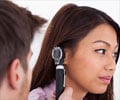- Protect Your Hearing! - (http://www.asha.org/uploadedfiles/protect-your-hearing-presentation.pdf)
- 10 Ways to Protect Your Hearing - (http://www.aarp.org/health/healthy-living/info-2015/protect-your-hearing-photo.html#slide10)
- Ears - ways to protect your hearing - (https://www.betterhealth.vic.gov.au/health/conditionsandtreatments/ears-ways-to-protect-your-hearing)
- Top 10 tips to help protect your hearing - (https://www.careplace.org.uk/information/top-10-tips-to-help-protect-your-hearing)
- Hearing Protection Devices (HPD’s) - (https://www.cdc.gov/niosh/mining/userfiles/workshops/hlp1/05-hudakhearingprotectors.pdf)
- Earmuffs - (https://en.wikipedia.org/wiki/earmuffs#hearing_protection)
Ways to Protect Your Hearing
Hearing health is as important as a healthy body as hearing is the key to communication. Hearing loss can set in gradually and before you know it, you might have lost the hearing ability considerably.
Here are some tips to protect hearing and cut the risk of hearing loss.

1. Avoid Exposure to Loud Noises: Hearing loss can be caused by exposure to very loud noise. Long-term exposure to loud noises and listening to loud music on earphones can also cause temporary or permanent damage to the hearing. The loudness levels of some of the common sounds around us are as follows:
- Normal conversation: 60-65dB (decibel)
- A busy street: 75-85dB
- Lawn mower/heavy traffic: 85dB
- A heavy lorry about 7 meters away: 90-95 dB
- A hand drill: 98dB
- Rock concert/Ambulance siren: 120 dB
Long term (six months or more) continuous exposure to noise levels more than 90 dB can cause a temporary hearing loss. A single loud sound of 110 dB or above can cause sudden hearing loss.
2. Riding Vehicles That Are Too Loud: Vehicles such as convertibles, certain motorbikes and motorboats are as loud as 110 decibels. Use ear plugs while riding such vehicles.
3. Exposure to Noise at Work Place: If the work place is very noisy due to machines, drills or forklift trucks, it is important to take measures to protect your hearing. The corporate takes the responsibility to provide such measures and the employees must follow the routine. For example, some corporates that deal with heavy machines in factories, provide ear plugs or ear muffs and have extensive programs for the conservation of hearing of its employees.

4. Never Ignore Tinnitus: Tinnitus is a ringing sound in the ears. It is one of the first symptoms to appear when there is a problem in the ears and therefore must not be ignored. Consult an expert and get the root cause treated.
5. Infections of the Sinus, Ear or Throat: Infections in the nose, sinus or throat can spread to the middle ear through the Eustachian tube. The auditory tube or the Eustachian tube connects the middle ear to the wind pipe, at the end of nasal cavity. Chronic infections of the middle ear can lead to inner ear damage.
6. Diseases Related to Hearing Loss: Some viral infections such as mumps, whooping cough and measles can cause hearing loss. Bacterial infections such as meningitis and syphilis also cause hearing loss. Timely vaccination and early diagnosis of the disease is the key to preserve hearing.
7. Do Not Use Ear-buds or Sharp Objects to Clean the Ears: Inserting sharp objects or even ear buds to clean the ears is very dangerous to the ear drum. Some people find using the ear buds very soothing and use them regularly. However, the ear drum is a very delicate structure and can break with even a mild touch which could lead to infection in the middle ear and consequently to hearing loss.

8. Ototoxic Drugs: Some drugs like quinine (taken to treat malaria) are known to be ototoxic, or poisonous to the ears. The hearing loss may be temporary or permanent. People in occupations involving exposure to chemicals are at risk and must take necessary precautions for protecting their hearing.
9. Head Injury and Hearing: The middle ear and the inner ear are located on the inner side of the temporal bones. Any injury to the bones, contusion, can cause damage to the structures of the ear. Concussion is the injury caused by blow to the head that shakes the internal organs without damaging the skull bones. Concussion can also lead to damage to the delicate structures of the ear. Wearing helmets and seat belts are some of the preventive measures to be taken.
10. Protect Your Ears While Swimming and Scuba Diving: Entering of water into the ear canal can cause fungal infection, which can spread to the middle ear. Swimming and diving also can lead to sudden pressure changes in the middle ear, causing damage to the tiny bones inside. These tiny bones are the transmitters of the sound from the external ear to the inner ear.

Top Tips for Safer Listening
Safe listening and protection from noise are essential to preserve your hearing. Following are some tips:
- Use ear plugs: Earplugs or ear muffs reduce noise levels up to 30 decibels. They can be used when in noisy surroundings or workplace.
- Go for headphones instead of earplugs. Headphones reduce the outside noise more than earplugs do, reducing the need to increased loudness of your music player.
- Avoid listening to music at high volumes. Maintain the volume at 65 to 70 decibels while listening to music from speakers.
- If you are experiencing high noise levels at your workplace, discuss with your employer about the options of protecting your ears.
- Sports like target shooting are also the source of loud sounds and the players need protection in such places.
- Holiday events like fireworks, concerts, baseball games, car races and air shows are all noisy. Wear suitable protection for your ears.
- Soldiers are also at high risk of noise-induced hearing loss and need adequate protection for the same.
Types of Hearing Protection
The most commonly used hearing protection devices are ear plugs and ear muffs.
Ear Plugs: Plug-like structure is inserted into the ear canal and reduces the loudness level reaching the ear. Various materials are used to make ear plugs and provide protection in different ways.
Ear plugs can be made of foam, which expands when they are inserted into the ear. These are usually disposable ear plugs. Pre-molded ear plugs are soft and flexible devices that are made of silicone, plastic or rubber. They do not change shape and are washable and reusable. Sometimes, the ear plugs are provided with a head-band or string to keep them together.
Ear Muffs are hard outer cups that fit around the ear, surrounded by soft ear cushions made of material that reduces sound levels and is worn with a head band. They are suitable for places where noise levels are higher than 90 decibels. Construction sites also use ear muffs attached to safety helmets.









